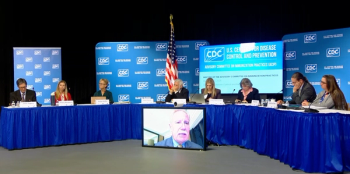
Proximie partners with HistoSonics to boost non-invasive liver tumor treatment
Key Takeaways
- Proximie and HistoSonics partner to integrate cloud-based OR platform with histotripsy system, enhancing non-invasive liver tumor treatment.
- The collaboration targets hospitals and surgery centers in select U.S. regions, aiming to improve surgical efficiency and patient outcomes.
Proximie and HistoSonics collaborate to enhance non-invasive liver tumor treatments, improving patient outcomes and surgical efficiency through advanced technology integration.
The partnership will see Proximie’s intelligent, cloud-based operating room platform integrated with HistoSonics’ novel histotripsy system—an advanced therapy that uses focused ultrasound to destroy tumors without incisions or heat. The joint effort will target hospitals and ambulatory surgery centers in initial regions including Chicago, Colorado, Florida, Louisiana, Seattle, and Southern California.
“We are thrilled to announce our partnership with HistoSonics, driving the rollout of the cutting-edge Histotripsy System while making a tangible impact on outcomes for those suffering from liver tumors,” said Nadine Hachach-Haram, founder and CEO of Proximie. “The partnership is testament to the benefits of intelligent digital connectivity within the OR, enabled by the Proximie platform, providing value to stakeholders across the health care ecosystem.”
The Proximie platform allows real-time connectivity, data unification, AI-powered insights, and a rich video library—all tailored to improve surgical collaboration and decision-making. By integrating the system with HistoSonics’ device, surgeons can receive live, expert guidance during procedures, helping to accelerate adoption of the new therapy while enhancing patient safety and outcomes.
“Our partnership with Proximie represents our commitment to partner with world leaders in their respective domains, providing our customers with the best technology solutions possible,” said Mike Blue, president and CEO of HistoSonics. “Proximie’s ability to provide real-time virtual presence in histotripsy procedures provides opportunities for our medical team to share expertise with physicians across the world and support our customers in unprecedented ways.”
With nearly 300,000 liver tumor diagnoses each year in the U.S.—many of them metastatic and with poor survival rates—the combined solution offers new hope. Physicians are already seeing the benefits.
“HistoSonics' Edison Histotripsy System has drastically improved outcomes for our patients suffering with liver tumors,” said Kevin Burns, chief of interventional radiology at Providence Mission Hospital. “The system's ability to destroy tumors via non-thermal, non-invasive, personalized therapy significantly reduces recovery times—getting patients out of hospital and back on their feet more quickly, while improving our productivity and operational efficiency. Additionally, the opportunity for clinicians to share live guidance when using the Histotripsy system, via the Proximie platform, is invaluable.”
The partnership builds on Proximie’s recent collaborations with major medical technology firms and marks another milestone in its mission to digitize and democratize surgical care. The company is now active in healthcare systems on five continents, working alongside major MedTech developers to extend access to high-quality surgery worldwide.
A new era for digital surgery and non-invasive therapies
The integration of digital platforms with next-generation surgical tools marks a transformative period in health care, especially in the field of non-invasive
One key trend is the rise of intelligent OR ecosystems that enable live collaboration, training, and support—even when the expert is miles or continents away. These platforms are not just about video sharing; they incorporate structured data capture, advanced analytics, and AI-driven decision support that can adapt to a surgeon’s workflow in real time. Such capabilities are proving essential in scaling adoption of emerging surgical techniques and technologies, especially those requiring specialized training.
At the same time, non-invasive therapies like focused
Together, these innovations are making it possible to deliver complex, precision-driven care to more patients in more places—supporting both better outcomes and more sustainable health care systems.
Newsletter
Stay informed and empowered with Medical Economics enewsletter, delivering expert insights, financial strategies, practice management tips and technology trends — tailored for today’s physicians.















